| Columns Retired Columns & Blogs |
I like the Empire turntable mat!
The SME 6 is a slow starter, but unless you plan on using it at a disco, that's no problem. To fine-tune the speed: With the motor running, hold down the large rotary knob until the speed LED blinks, then turn the knob clockwise or counterclockwise to increase or decrease the speed. Once set, push the large knob down again. The Model 6 holds speed well.
Rich, full, well-controlled sonics: For a moving magnet cartridge, the 2M Black LVB sounded detailed, open, and extended on top—but the Model 6 exploded to life with the MC Cadenza Black. I played a 1997 test pressing of a spectacular-sounding reissue of the 1961 Argo Records release, Ahmad Jamal's Alhambra, cut in 1997 by Bernie Grundman for the German Alto Analogue label (Alto AAOO5), about a decade before the Universal fire destroyed the tape.
This 1961 Ron Malo recording has drum slam, transparency, and bass finesse. Jamal is playing upfront, and there you are, sitting front row, center. When Vernell Fournier lands hard on the drums to end the opener—Rodgers and Hammerstein's "We Kiss in a Shadow"—it should be a well-controlled dynamic surprise, and the SME 6 delivered the goods (and how!) through the Wilson XVX (reviewed in this issue). Israel Crosby's bass lines were taut, well controlled, and nimbly reproduced, whether he was subtly or insistently plucking.
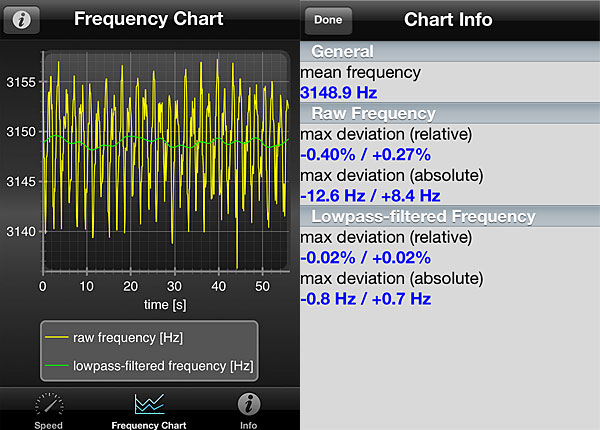
I know this record well, and while the Model 6 left some stuff on the table compared to the big rigs played back through far more costly phono preamps, the Model 6 delivered sonic satisfaction, and the differences were around the margins. This 'table has been carefully and thoughtfully tuned to produce control but not a thick, overdamped personality.
The double-45rpm Analogue Productions reissues of three of Dave Wilson's famous Wilson Audiophile recordings cut by Kevin Gray at Cohearent Audio (release date March 12, 2021) arrived too late to include in the XVX review but in time for this column. I covered the 33 1/3 reissues on Analog Planet. (If you want to read insanity, read the comments.)
One of the three records is Winds of War and Peace (APC-8823-45), which includes the famous "Mallet of Death" ("MoD") bass drum thwacks on the opening track, "Liberty Fanfare." The Model 6 and the MC Cadenza Black produced a deep, taut, tuneful, room-shaking "thwack." The National Winds sounded quite fine.
The 'table is competent for sure, but I think what most sells the musical goods is the M2-9 arm. Tonearms are SME's core competency, and now if you want a new one, it must come with an SME 'table.
There's some stiff competition at the $9000 price tier, but if you're looking for a turntable at this price and want the full range of cartridge setup flexibility (other than zenith angle), you should check out the Model 6 before buying anything else. Other than that fakakte clamp, SME's latest entry is a thorough turntable reboot for the company and a complete success. The more I used it, the more I enjoyed its open, airy sound and its solid bottom end—and right now there's more than $1 million worth of turntables set up in my listening room!
The Sculpture A.3l MC Cartridge and Mini Nano Step-Up Transformers
I first met this intense group of French analog fanatics at Munich High End a few years ago as they carried around an assortment of cartridges on a plate like waiters serving hors d'oeuvres at a cocktail party. As I remember it, they excitedly showed me an almost dizzying assortment of custom cartridge retips and mods. (footnote 5)
Their website explains that Sculpture A is a France-based consortium of European audio and broadcast professionals who are way into analog. (The "About" page features a torso, the head of which is blocked by a copy of the first Dead Can Dance album, so I was all in.)
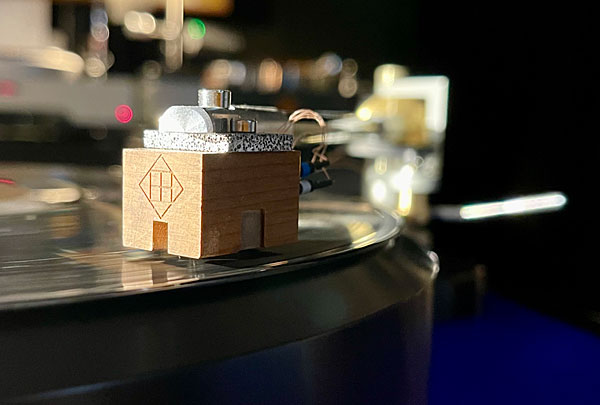
The wonderful story I was told in an email about the assembled team deserves retelling, but this column hasn't got the space to tell it in full. For now, here's a summary: All Sculpture A products are conceived, designed, and built in Europe by Luxembourg designer Philippe Galowich, German industrial designer Hamlyn Terry, and the Hungarian team of cartridge builder Laszlo Szalai and step-up– transformer designer Zsolt Bodnar.
One of the ringleaders is Franáois Saint-Gérand, who in 2016 left his life as a civil servant to invest himself fully in analog hi-fi. He sent me a Sculpture A.3L MC cartridge based on the venerable Denon 103 generator, but which they heavily modify. The cost is $1955, which in today's cartridge world is moderate.
Today, a "base" 103 costs approximately $229, but the Sculpture A version is an entirely different beast. It features a nude, line-contact III stylus attached to a boron cantilever. Mr. Saint-Gérand, who owns an associated retail store, told me that the modifiers try to achieve lower moving mass than the original's. There are other Sculpture A versions at different price points, featuring alternate stylus profiles from spherical to Ogura PA, as well as a mono version.
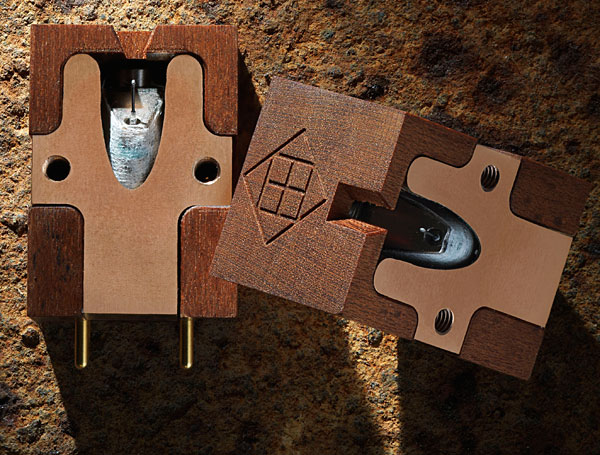
The body is of vaporized and impregnated wood—a material that's light and relatively soft with good damping properties. A brass internal structure adds mass and lowers the center of gravity. The Denon generator is sandwiched between this brass "horseshoe," an internal decoupling material, and the vaporized, impregnated exoskeleton.
Attaching the cartridge to the headshell adjusts the coupling of the brass element and affects the cartridge's behavior, Mr. Saint-Gérand averred. Light tightening (0.4mN) is recommended, which, conveniently, is what the Rega torque wrench I use is set to. An Allen screw on the cartridge's side adjusts lateral damping.
The Sculpture A team also alters the damper to achieve 12µm/mN compliance; adjusts the piano-wire tension to produce lateral tracking better than 90µm at 315Hz; changes optimal VTA from 15 to 23 degrees (incorrectly referenced as SRA in the spec sheet); and adds an additional neodymium magnet to the circuit. Each sample is then hand-tuned.

The version I was sent uses Denon's stock coils, but the company offers versions with hand-wound coils of copper or silver. The .3 range is said to achieve channel separation of at least 28dB and as much as 30dB, while the hand-wound coil versions are said to achieve greater than 30dB separation. Other specs include 2.4gm tracking force and a relatively high 43 ohm internal impedance, close to the 40 ohm impedance of the original Denon DL-103.
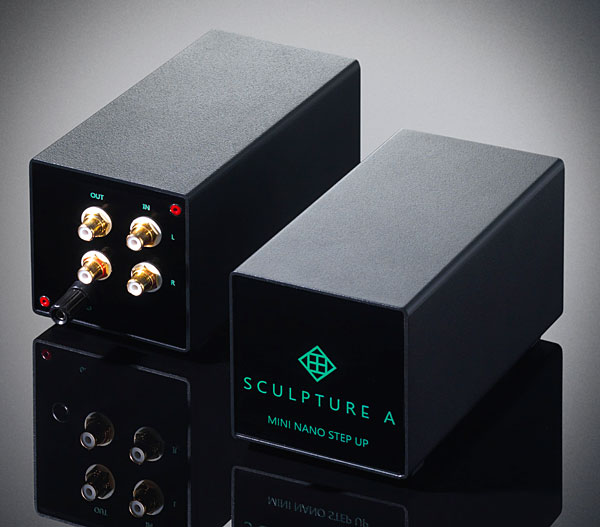
I was also sent two Sculpture A nanocrystal core, 99.99% copper coil, toroidal step-up transformers: one 1:10 (20dB) and one 1:20 (26dB). These sell for approximately $750 each, which is dirt cheap for a nanocrystal-core SUT. The enclosure is plebian, which surely helps keep the cost down.
I suggest you read what Stereophile writers have written over the years about the "stock" Denon DL-103 and its kin. JGH wrote, "The DL-103S is incredibly clean-tracking, with a light, airy high end, a subtle zizz on string tone, and a very slightly withdrawn quality." Much later, Art Dudley wrote, "Like Bill Monroe's lost love, the DL-103 gives you body and soul—and it's a hell of a bargain."
Art also wrote, in December 2007 (Vol.30 No.12), that "the Denon DL-103 is one of those products that cries out to be maximized." Based on my correspondence with Mr. Saint-Gérand, I think it was Art's plea that set him and his colleagues on his quest to build a better 103—and they did! Damn I wish I could forward this cartridge, and the two SUTs, to Art, who loved step-up transformers as much as anything.
I installed the A.3L on the SAT CF-1 09 Ti arm mounted on the SAT XD-1 turntable and ran the 1:10 Mini Nano Step-Up into the Ypsilon VPS-100 Silver edition's MM phono preamp: a circa $2000 cartridge on a $250,000+ arm/'table combo and a $700 SUT into a $50,000 phono preamp. A stereo system is only as good as its weakest link, right? If I could sit you down and play for you Bill Henderson Live at the Times (Discovery Records DS-779), recorded in 1975, a used copy of which cost me $6.00, you would hear Henderson center stage surrounded by his quartet as live, liquid, 3D-solid, artifact-free, and present as any transducer chain at any price might produce. I played it through half a dozen times in one sitting. (Sorry, I didn't let the vinyl "rest" between plays.)
The cartridge and SUT were magic on that record, and on others where the sonic stars aligned. With fairly dry, closely miked recordings with acoustic instruments, the listenability was off the charts. But with other kinds of recordings—hard rock and especially ambience-rich, distantly miked ones—the cartridge had a "wet kiss from your least favorite aunt" quality that, while still magically liquid, artifact-free, and you-are-there enticing, can swallow detail and transient information in a sea of warmth and atmosphere that is not, strictly speaking, on the record.
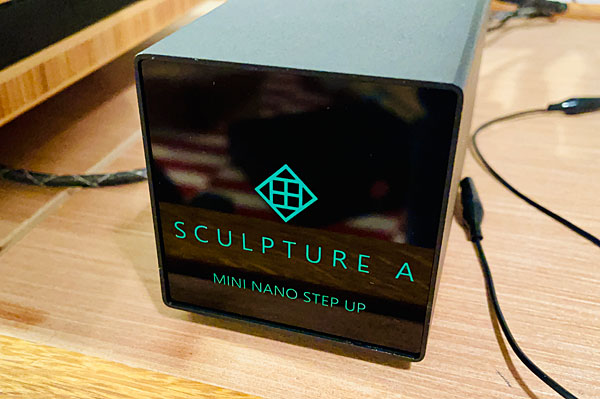
JJ Kirkpatrick's trumpet on the wonderfully recorded, richly atmospheric Yuko Mabuchi Plays Miles Davis (Yarlung YAR45588-171V) just about disappeared, lost in the ambient fog. This recording has plenty of room sound, which the cartridge overemphasized. Same with Frank on Concert Sinatra, discussed at greater length in my XVX review.
On the other hand, the cartridge's reproduction of "La Nevada," from the Gil Evans album Out of the Cool (Alto Analog AA005, or Impulse AS-4)—wonderfully recorded by RVG—while more liquid and ambient than I like or am accustomed to, kept me mesmerized for the entire 15 minutes. The cartridge's liquidity and lushness did not overwhelm the recording's outstanding transient detail, and the soundstage was unusually generous and deep. Both ingredients may be artificial, but in this context, it worked.
Mr. Saint-Gérand wrote in one of his emails: "We know it is not the best cartridge in the world, but it clearly reflects parts of each one of us, in our ideas, in our way of listening to music and enjoying, of being a team and friends." True, they've not produced "the best cartridge in the world," but those of you who love the single-ended triode tube's liquid, lush, and "pure" sound will love this affordable, hand-tuned cartridge/SUT combo that, though lush and somewhat distant as JGH described the original, has a nicely extended and well-developed top end. If you are already a DL-103 fan and you get an A.3 fitted with the stylus of your choice, you may conclude that it is the world's best 103 variant.

to compare the Hommage Auditorium 23 with the Mini Nano Step-Up. I'm still searching for step-ups for my Ortofons CG 25, CG 65 and my EMT OFD25 that better the performance of pure tube MC to MM preamplification... (the Hommageis too expensive without knowing the best ratios for my hifi). The Sculpure A would be cheap enough to buy different ratios.

I still after all these years cannot understand why SME decided to stop selling their tonearms, the decision seems counterintuitive to me. I also wish they still made the 10, I think it is a well thought out table and build quality is impressive. I have no doubt this 6 is magnificent but its looks leave me a little cold, I do love the speed controller and wish more manufacturers would offer speed pitch adjustment. I wonder though if there is any resonance under the record from the grooved “mat”.